Abstract
Gravitropic asymmetry of auxin was observed in hypocotyls of tomato (Lycopersicon esculentum Mill.) soon after horizontal placement: the ratio of apically supplied [3H]IAA collected from the lower sides to that from the upper sides was about 1.4 between 5 and 10 minutes. This was adequately early to account for the beginning of curvature. The auxin asymmetry ratio rose to about 2.5 between 20 and 25 minutes, and to 3.5 during the main phase of curvature. This compares reasonably well with the roughly 3.9 ratio for elongation on the lower side to elongation on the upper side that is the basis for the curvature. These data extend evidence that the Went-Cholodny theory for the mediation of tropisms is valid for dicot stems. Also consistent with the theory, an auxin asymmetry ratio of 2.5 was observed when wrong-way gravitropic curvature developed following application of a high level of auxin. In addition to reversing the asymmetry of elongation, the large supplement of auxin resulted in lower net elongation. Previous data established that ethylene is not involved in this decrease of growth as a function of increasing level of auxin.
Full text
PDF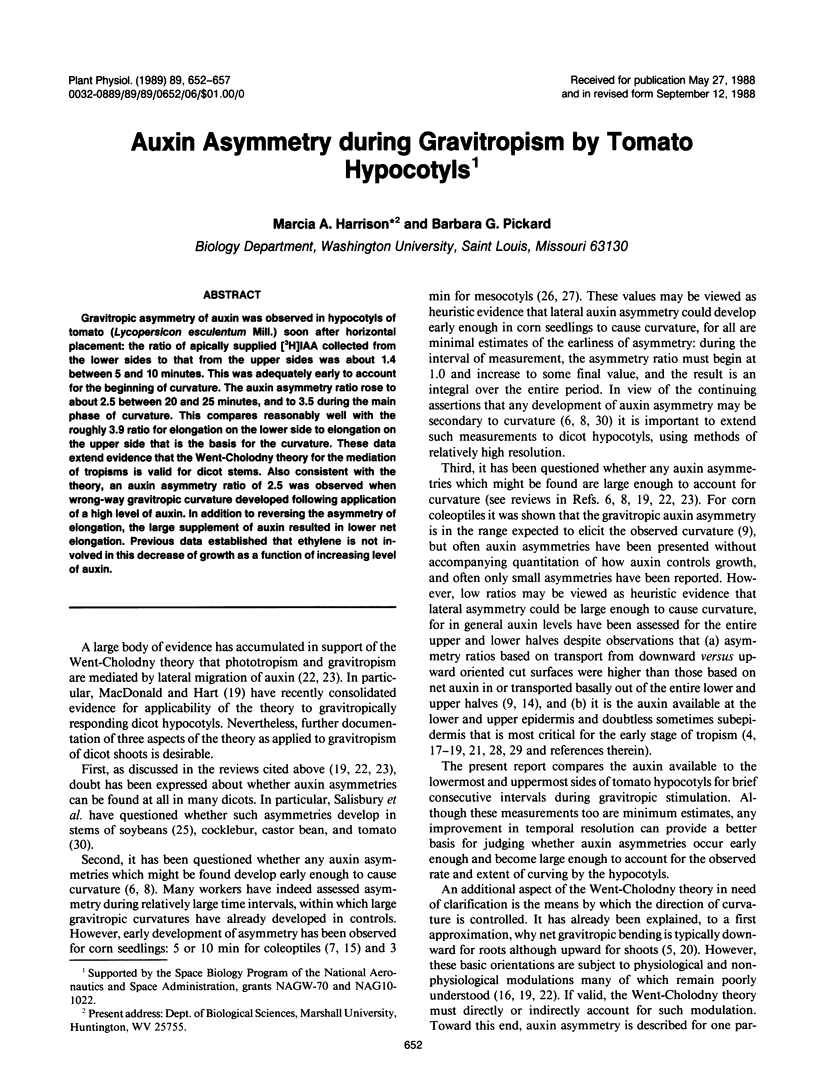
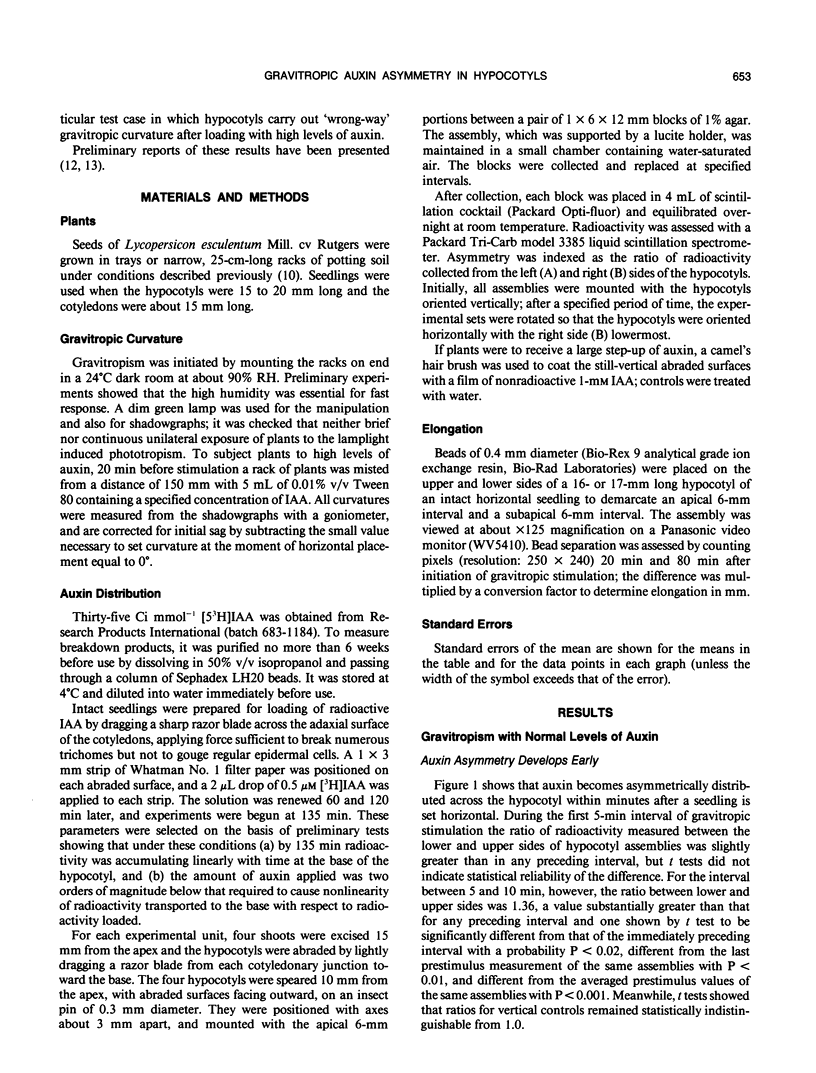
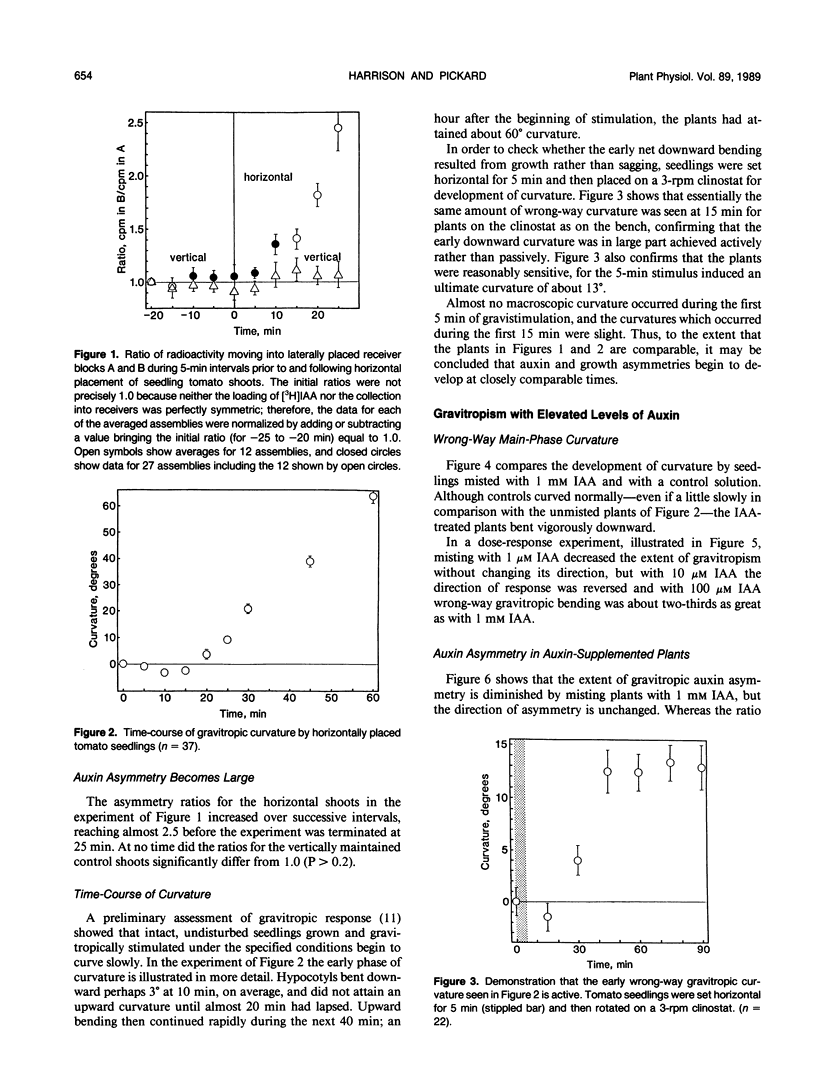
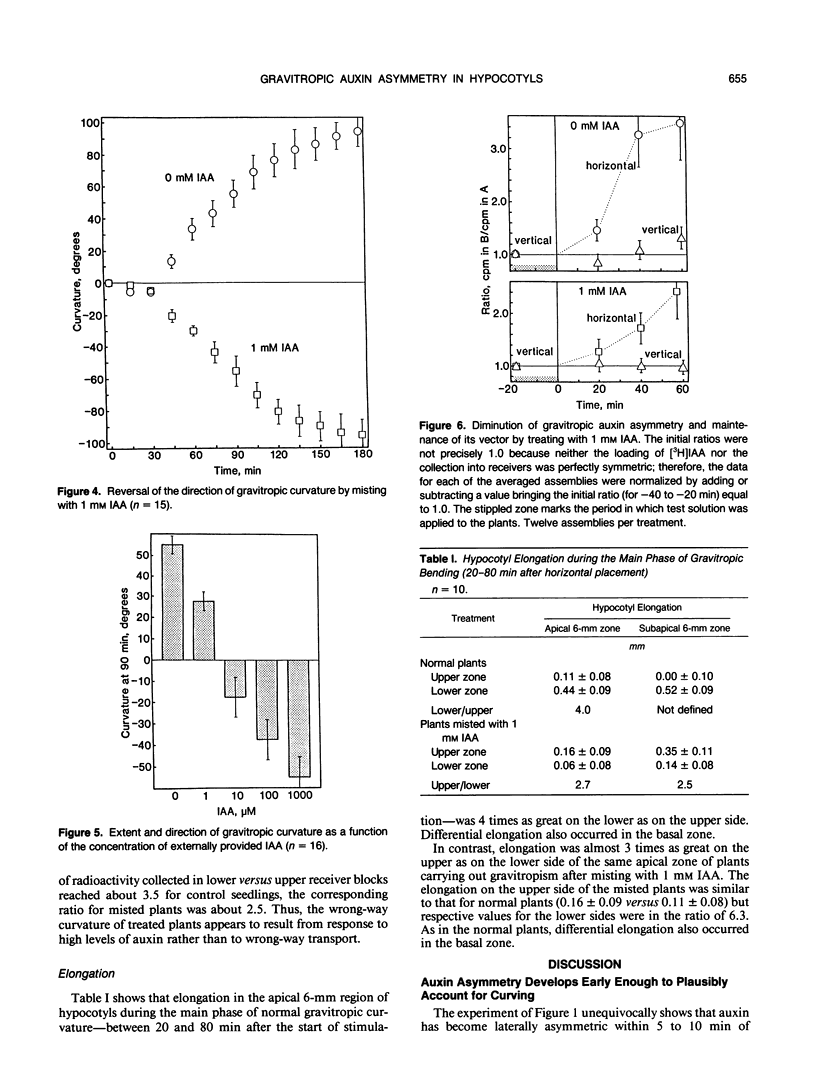
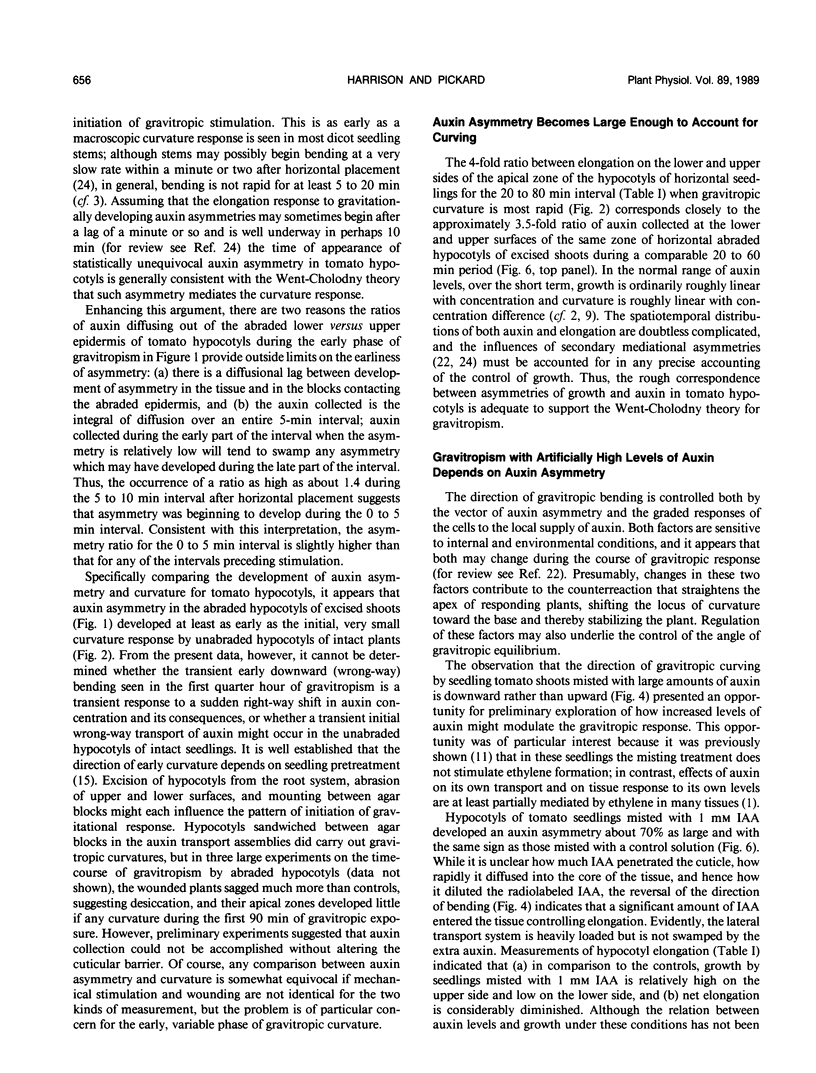
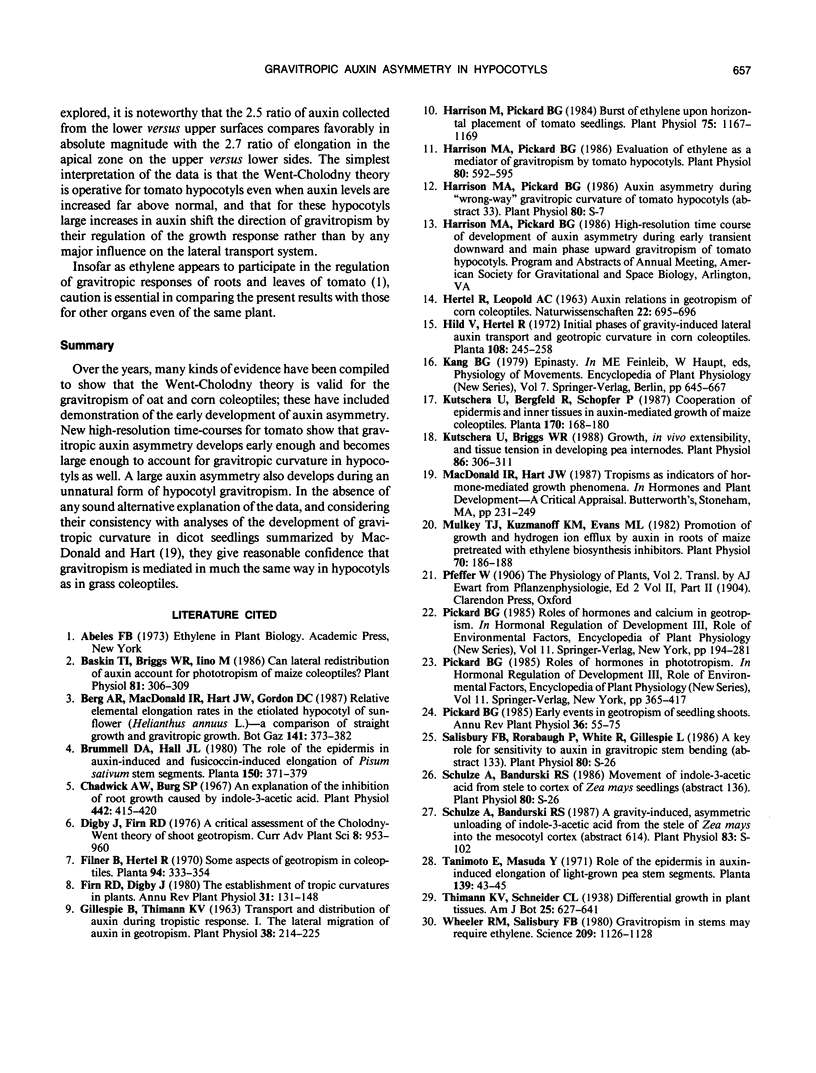
Selected References
These references are in PubMed. This may not be the complete list of references from this article.
- Baskin T. I., Briggs W. R., Iino M. Can lateral redistribution of auxin account for phototropism of maize coleoptiles? Plant Physiol. 1986 May;81(1):306–309. doi: 10.1104/pp.81.1.306. [DOI] [PMC free article] [PubMed] [Google Scholar]
- Chadwick A. V., Burg S. P. An explanation of the inhibition of root growth caused by indole-3-acetic Acid. Plant Physiol. 1967 Mar;42(3):415–420. doi: 10.1104/pp.42.3.415. [DOI] [PMC free article] [PubMed] [Google Scholar]
- Gillespie B., Thimann K. V. Transport & Distribution of Auxin during Tropistic Response. I. The Lateral Migration of Auxin in Geotropism. Plant Physiol. 1963 Mar;38(2):214–225. doi: 10.1104/pp.38.2.214. [DOI] [PMC free article] [PubMed] [Google Scholar]
- Harrison M. A., Pickard B. G. Evaluation of ethylene as a mediator of gravitropism by tomato hypocotyls. Plant Physiol. 1986;80:592–595. doi: 10.1104/pp.80.2.592. [DOI] [PMC free article] [PubMed] [Google Scholar]
- Harrison M., Pickard B. G. Burst of ethylene upon horizontal placement of tomato seedlings. Plant Physiol. 1984;75:1167–1169. doi: 10.1104/pp.75.4.1167. [DOI] [PMC free article] [PubMed] [Google Scholar]
- Kutschera U., Briggs W. R. Growth, in vivo extensibility, and tissue tension in developing pea internodes. Plant Physiol. 1988 Jan;86(1):306–311. doi: 10.1104/pp.86.1.306. [DOI] [PMC free article] [PubMed] [Google Scholar]
- Mulkey T. J., Kuzmanoff K. M., Evans M. L. Promotion of growth and hydrogen ion efflux by auxin in roots of maize pretreated with ethylene biosynthesis inhibitors. Plant Physiol. 1982 Jul;70(1):186–188. doi: 10.1104/pp.70.1.186. [DOI] [PMC free article] [PubMed] [Google Scholar]
- Pickard B. G. Early events in geotropism of seedling shoots. Annu Rev Plant Physiol. 1985;36:55–75. doi: 10.1146/annurev.pp.36.060185.000415. [DOI] [PubMed] [Google Scholar]
- Wheeler R. M., Salisbury F. B. Gravitropism in plant stems may require ethylene. Science. 1980 Sep 5;209(4461):1126–1128. doi: 10.1126/science.209.4461.1126. [DOI] [PubMed] [Google Scholar]


